This is the ultimate chocolate chip cookie, with everything readers asked for (crispy edges, yes!)
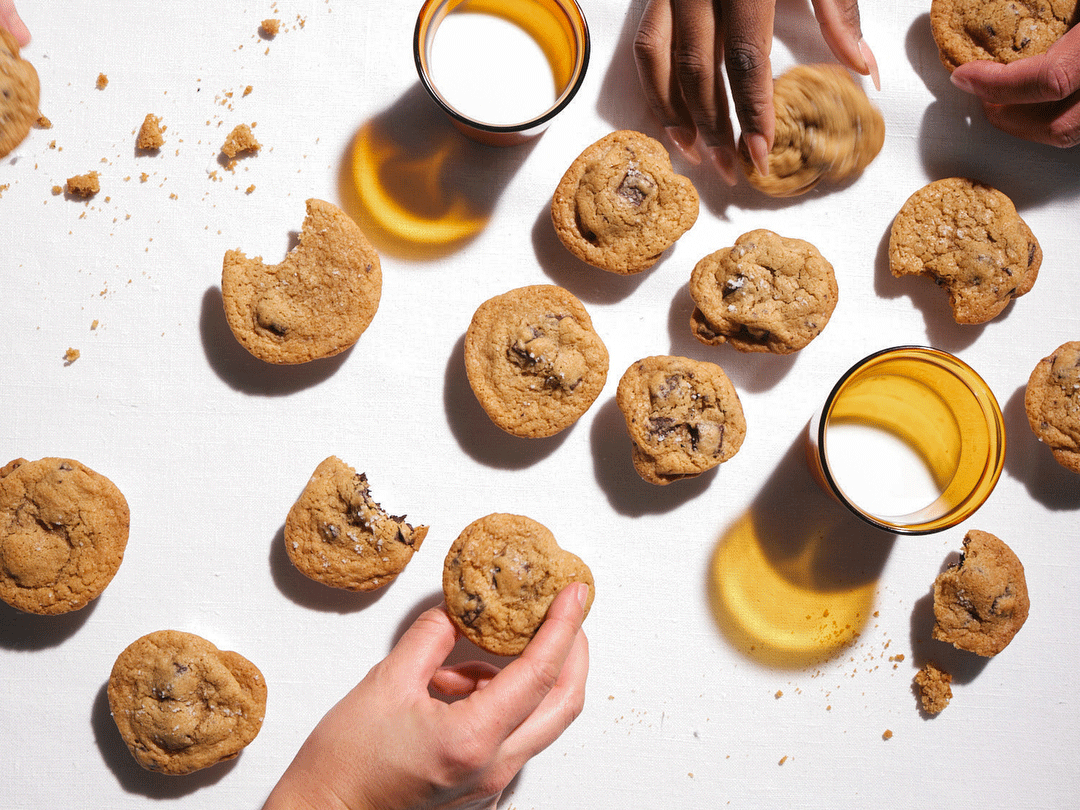
In the fall, The Times Food team asked readers what they love most in a chocolate chip cookie. What are the qualities that make the ultimate chocolate chip cookie? Is it crispy edges? Chewy? Gooey? Cakey? Extra chocolatey? A pinch of salt? What about nuts?
Of the 16 chocolate chip cookie characteristics presented in the reader survey, 82% of respondents said that chewiness is the most important. The next two highest-ranking characteristics were “with a hint of salt” (68%) and “gooey” (65%).
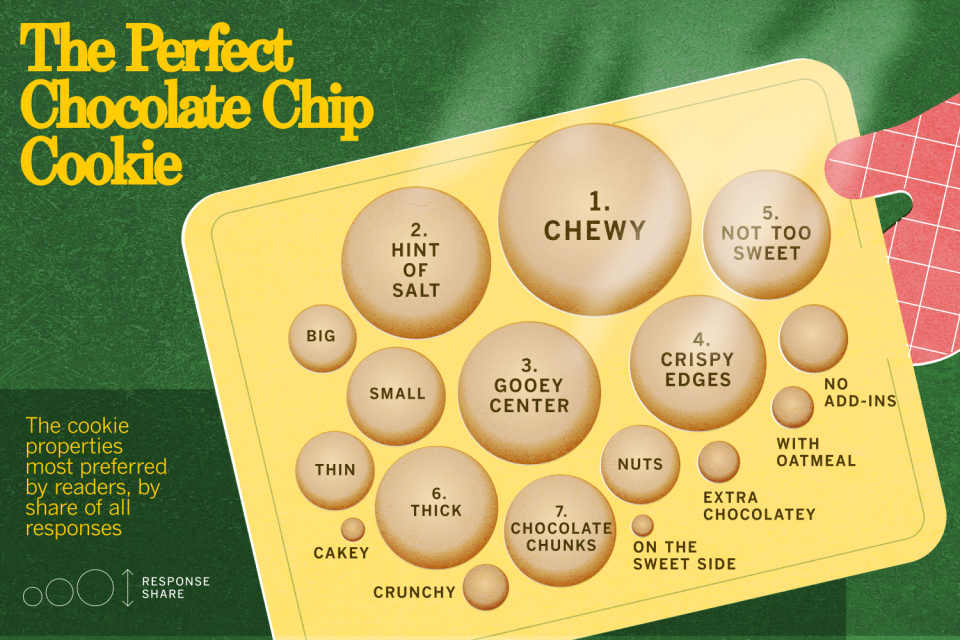
Other features that were important to 50% or more of respondents included “crispy edges” (62%) and “not too sweet” (58%). Fifty-six percent preferred thick cookies to thin, and 51% preferred chocolate chunks to chocolate chips. With that information in hand, I set out to develop a recipe that would deliver what the readers want.
These cookies are chewy and gooey (when warm) with crispy edges and a hint of salt. They are not too sweet, not too thin, and the recipe calls for chocolate chunks, though if you prefer chips, feel free to switch them out. They use basic ingredients that are readily available in a typical grocery store, and once your butter and eggs are at room temperature you can whip up a batch in less than an hour.
This cookie has the top seven reader-selected attributes. To achieve the ultimate chocolate cookie, here are the key factors.
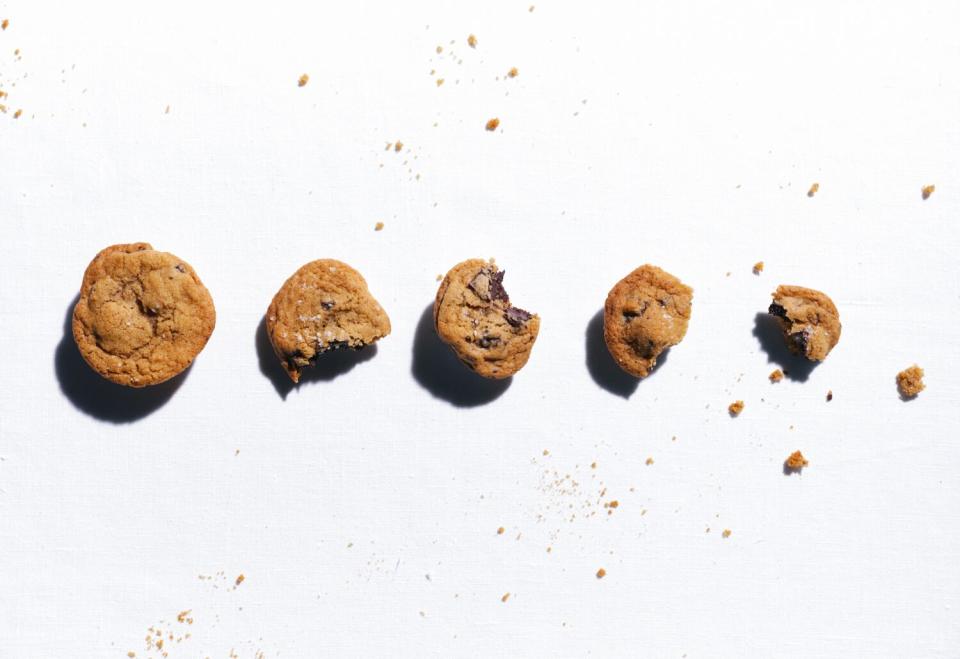
Chewiness is largely a result of the moisture content of the batter. Still, it can be affected by any number of additional factors such as the type of baking sheet, whether or not you line it, baking temperature, ambient climate and so on.
For the moisture component of this cookie, I opted to focus on the sugar, ultimately settling on a higher proportion of dark brown sugar to white granulated sugar. The molasses in the dark brown sugar not only adds moisture but also contributes to the "golden-ness" and balance of sweetness. White sugar takes the cookie in the crispy direction. The trick is finding the right ratio of dark to white. I tried it a few ways and wound up using about ½ cup more brown than white. Also, it is dark brown sugar rather than light brown: The dark has more moisture because of the additional molasses.
I should note that I line my low-rimmed baking sheets (industrial sheet pans) with parchment, which may help the cookies retain more moisture than when baked directly on the pan.

For extra chewiness, pull the cookies out of the oven a little sooner than the specified baking time. They will continue to cook once you remove them from the oven. To reduce the continued cooking time, let them cool slightly in the pan and then when firm enough to be moved (about five to 10 minutes) transfer the cookies from the baking pan to a rack or slide the parchment, cookies and all, onto the countertop or another, cool sheet pan.
For a less chewy, crisper cookie, bake for a minute or two longer than specified. The cookies will be crispy all the way through.
To achieve crispier edges, I added just a little baking powder to the mix. It helps with the rise, which exposes more surface area to the hot oven air. As the cookies cool and lose their puffiness, the drier edges settle on top of the moist interior, allowing for a little extra crunch.
If you prefer soft rather than crispy edges, baking expert Rose Levy Beranbaum notes in “The Cookie Bible,” (Houghton Mifflin Harcourt, 2021) that a few tablespoons of corn syrup will up the chewiness and soften the edges. I tried this using golden syrup. It added a wonderful butterscotch note to the flavor and, indeed, the cookies were soft all the way through.
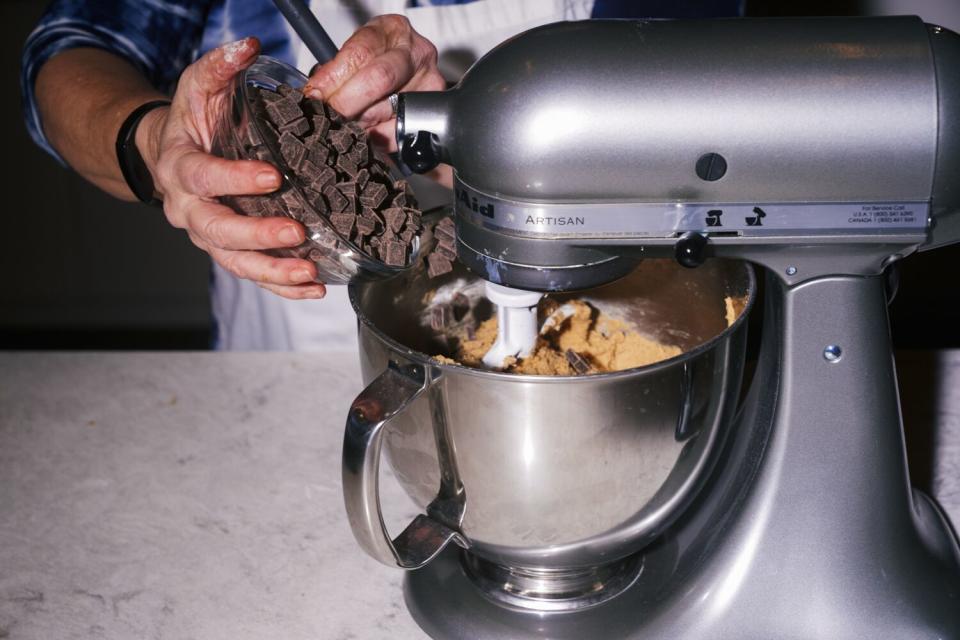
These cookies use semisweet chocolate chunks (available at Trader Joe’s). Taste testers liked semisweet chips (which are much easier to find) just as well. What they did not like was chocolate shards and dust (from hand-chopping chocolate) in the cookie as it melted into the batter, making the cookie more chocolatey and blurring the distinction between cookie and chip. Despite the pleasant, artisanal look, as one taster noted, it eliminated the surprise factor of “finding” the chocolate chips.
Two things help keep the sweetness of this cookie in check: a higher proportion of brown to white sugar and using dark brown sugar rather than light brown. White sugar is sweeter than brown sugar. Swapping out some white sugar for brown reduces the overall sweetness without upsetting the butter-to-sugar ratio. The additional molasses in the dark brown sugar makes it slightly bitter and a bit acidic. That slight bitterness and the extra acid help counter the sweetness of the white sugar.
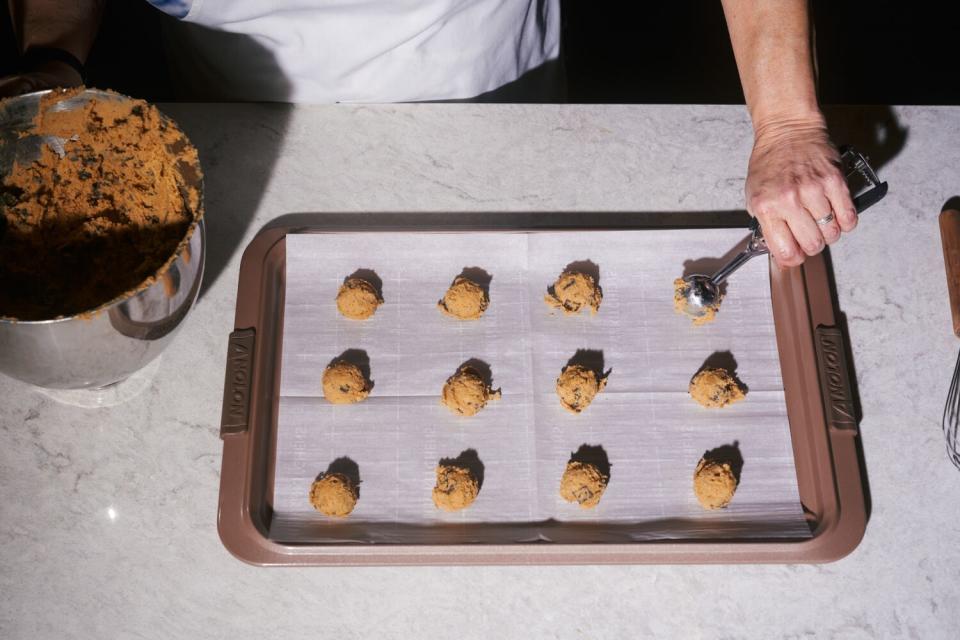
The chocolate you use will impact not only the chocolatiness of the cookie but also the overall sweetness. While we often talk about chocolate in terms of the percentage of cocoa solids, the amount of added sugar in the chocolate is just as significant a factor. Typically, the darker the chocolate, the less sweet it will be — but this is not always the case. Semisweet chocolate can range in cocoa solid content from 35% to 65% and typically has a sugar content of about eight grams per serving. Darker chocolates — typically 60% cocoa solids and higher — will have less than seven grams of sugar per serving. Interestingly, Scharfenberger semisweet dark chocolate clocks in at 62% cocoa solids and a whopping 21 grams of sugar per serving (and my taste testers did not care for it in the cookies). Feel free to use the chocolate that suits you; just be sure to pay attention to the sugar content as well as the cocoa solid percentage so that you know what you're getting. The sweetness of this cookie is balanced with semisweet chocolate. Opting for darker chocolate may upset that balance.
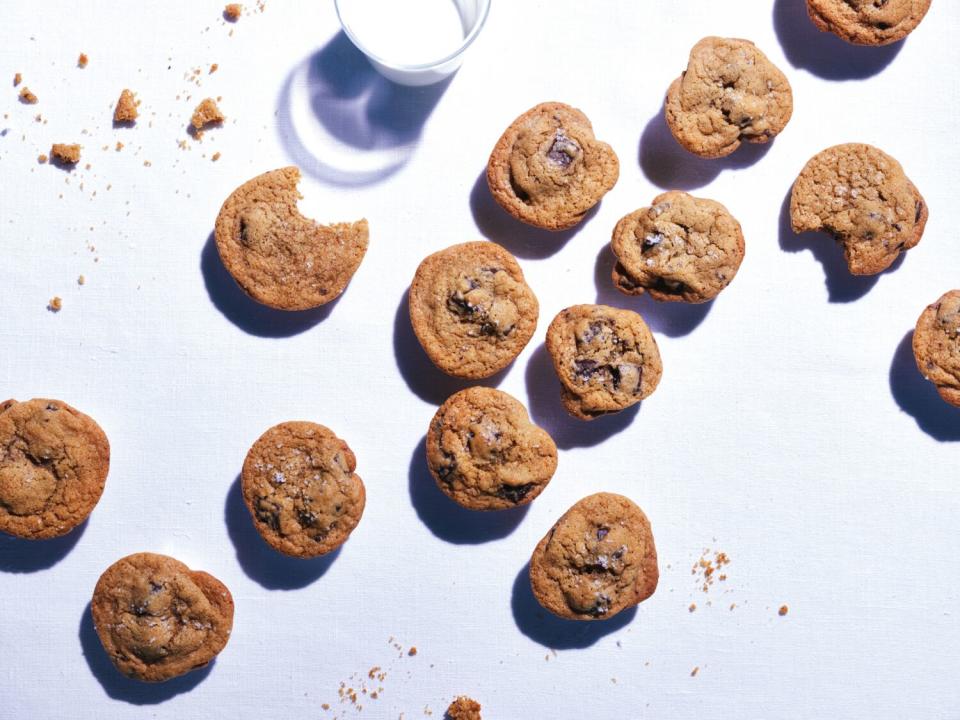
I used a 1-tablespoon measure (a #70 scoop, or balls a bit larger than a shooter marble) for 2- to 2½ -inch cookies. If you want them a little thicker, use a 1.5-tablespoon measure (#30 scoop, or balls about the size of a golf ball) for slightly larger, 2½- to 3-inch cookies. Bake the smaller cookies for eight to 10 minutes, the larger ones for about 13 minutes.
Finally, the gluten-free variation calls for Cup 4 Cup all-purpose gluten-free flour. While in theory any all-purpose gluten-free flour should give the same result, in reality each brand behaves differently. In blind tests, nobody guessed that the cookies made with Cup 4 Cup were gluten-free; they were even at times favored above cookies made with regular, all-purpose wheat flour (the taste testers didn’t know there were gluten-free cookies in the mix). Other all-purpose gluten-free flours did not fare as well. Use different brands here with caution.
And what about nuts? Readers have spoken: The ultimate chocolate chip cookie does not have nuts.
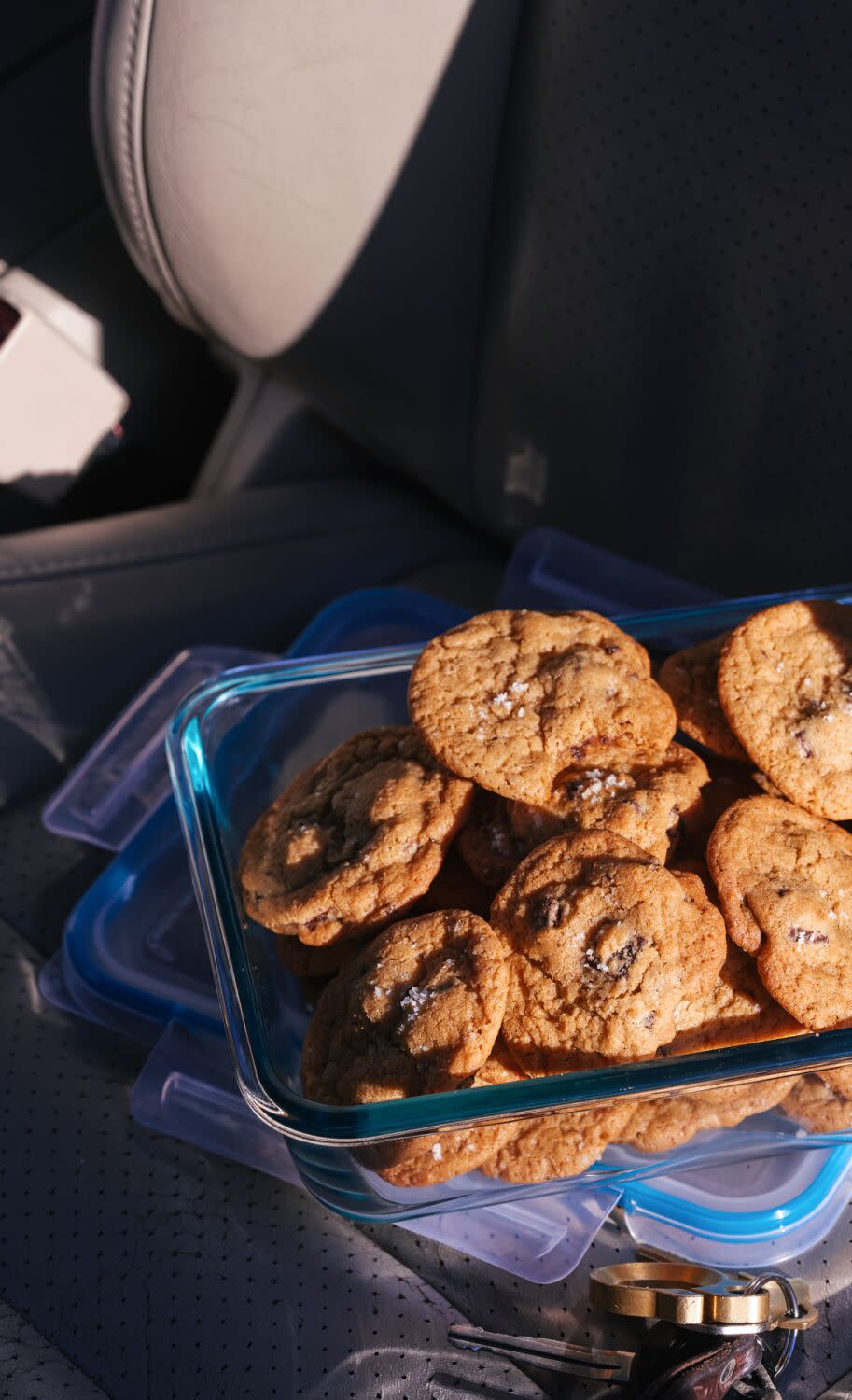
This story originally appeared in Los Angeles Times.


